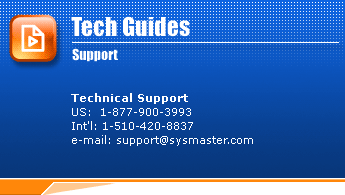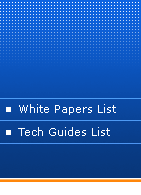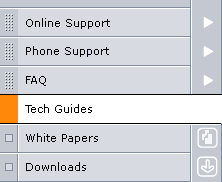  |
SysMaster QoS Examples:
Assigning upload/download bandwidth to users |
 |
 |
 |
Imposing Download Limit (inbound traffic)
User with Static IP address:
In the standard transparent implementation of SysMaster,
NA2 (network Adapter 2) is mapped to the internal side (LAN). Usually
this is the side where users are located, so the traffic going towards
him/her (user we try to limit) will be Outbound from NA2.
So NA 2 should be assigned to Outbound Traffic.
The next step is to define a class. The class will instruct SysMaster
as to what bandwidth it should allocate and what priority is should
assign to the traffic destined to the users. Priority "one"
is the highest, and "eight" the lowest, where by default
it is set to "four". It is recommended that all classes
have priority "four", until you decide to assign higher
priority to a class.
After we define the limiting rate, the next step
is to specify how to filter out the traffic destined to the target
user (or group of user) for this class. Since the traffic has, as
its final destination the target users, SysMaster should use his/her
IP address as an identification parameter in order to associate
the traffic with him/her. So if we specify:
Destination
IP Address: 67.17.164.65
Net Bits: 32
Source IP Address: ALL
Net Bits: 32
Any packets coming from outside to the user will
have to comply with the traffic rules for the respective class.
We can assign multiple users (filters) within the class; this
way they will share common bandwidth allocation (virtual channel).
If multiple filters are competing for the same bandwidth allocation,
it is recommended to select the SFQ (Stochastic Fair Queuing)
option in the class properties. This way SysMaster will provide
equal access for all users to the bandwidth recourses of the class
(versus first-in-first-out, FIFO).
User with Dynamic IP address
In this case all settings are as above, except
that the identifying parameter will be:
Destination
Ethernet Address (MAC): 00:90:FB:07:8C:33
If our goal is to limit the traffic going to a
particular user not in general, but for certain services only,
than SysMaster will have to know the TCP/UDP port of the service.
For Example: if we want to restrict the download of "kazaa"
files to this user, the filter will look like this:
Destination
IP Address: 67.17.164.65
Net Bits: 32
Destination Port: 1214
Source IP Address: ALL
Net Bits: 32
IMPORTANT: MAC addresses
can be specified in an Outbound Class filter only as a destination,
and in an Inbound Filter as a Source. This means that, if you need
to set a filter, capturing the traffic from a MAC address, it should
be specified as a source MAC address in an Inbound filter
of the network adapter adjacent to this MAC address.
If you wish to capture the traffic destined for this MAC, then specify
it as a destination MAC address in a filter of an Outbound
Class assigned to a network adapter adjacent to the MAC address.
For example: If the class rate is set to
10KBytes/sec, the user download traffic associated with "kazaa"
files will be limited to 10KBytes/sec, but in the same time he/she
will not be restricted if downloading simultaneously a PDF file.
For each adapter, besides the classes with desired
rate, SysMaster must have one Default class for the rest of the
traffic, which did not match any of the filters in the above classes.
It is recommended to assign lower priority (7 or 8) and the maximum
throughput of the adapter to this class. For instance: if we have
a 10/100 Mb adapter, you can assign 12,800 Kbytes/s rate. The only
other option to be changed is Default Yes
Since the packets are matched against each class
(or the filter(s) in each class, to be exact) and if a match is
found the packet are allowed in (without further filtering), it's
important how we position the classes in the list. And most important
is the Default class to be the last one in the list. If new classes
are to be added, the Insert button should be used. Otherwise, all
packets will go through the Default class, and since it does not
have any filters will go straight in (or out) and the rest of the
classes will be useless. The same will happen if we have a class
with wider filter settings created above a stricter filter; the
packets just won't have the chance to reach down to the next class
after they were allowed in.
Imposing Upload Limit (outbound traffic)
The Outbound classes and Inbound filters work the
same way as in the inbound direction, except that destination MAC
and destination IP addresses will become source MAC and source IP
addresses, and vice versa, and configurations for adapters will
switch places.
|





